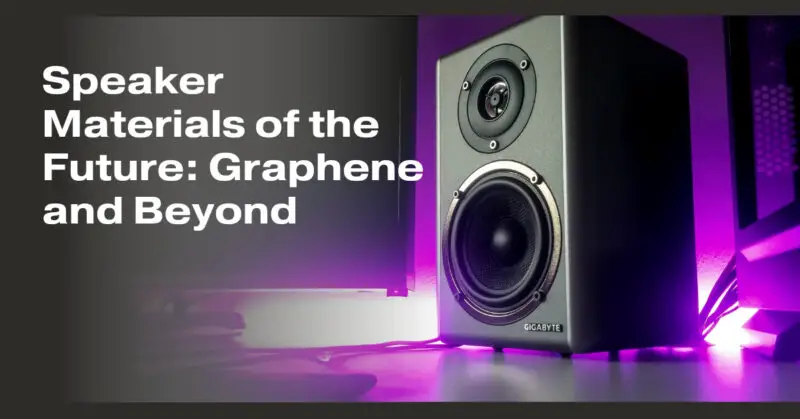As technology continues to advance, so does the quest for new and innovative materials to improve audio quality and speaker performance. Among the cutting-edge materials on the horizon, graphene stands out as a game-changer for speaker design and beyond. In this article, we’ll explore graphene and other potential future materials that could revolutionize the speaker industry.
1. Graphene: The Supermaterial
Graphene is a single layer of carbon atoms arranged in a hexagonal lattice, making it incredibly thin, lightweight, and strong. This two-dimensional material has garnered significant attention for its remarkable properties:
- Exceptional Conductivity: Graphene is an outstanding conductor of electricity, which is crucial for transmitting audio signals efficiently.
- Low Mass: Its low mass means that graphene diaphragms can respond quickly to audio signals, reproducing sound with precision and accuracy.
- Strength: Despite its thinness, graphene is incredibly strong and durable, making it ideal for speaker diaphragms that can withstand high volumes and intense vibrations.
- Lightness: The lightweight nature of graphene reduces the moving mass of the diaphragm, resulting in improved efficiency and reduced distortion.
- Flexibility: Graphene is flexible, allowing for the design of innovative speaker configurations and shapes.
2. Potential Applications of Graphene in Speakers:
Graphene holds immense promise for speaker technology:
- Diaphragms: Graphene diaphragms can produce highly accurate and detailed sound reproduction due to their low mass and exceptional stiffness.
- Improved Efficiency: Graphene-based speakers can potentially be more energy-efficient, requiring less power for the same sound output.
- Miniaturization: The flexibility and strength of graphene enable the development of ultra-thin and lightweight speakers, ideal for portable devices and headphones.
- Enhanced Durability: Graphene’s durability can lead to longer-lasting speaker components, reducing maintenance and replacement costs.
3. Beyond Graphene: Other Emerging Materials
While graphene is at the forefront of materials research, other materials are also being explored for their potential applications in speakers and audio technology:
- Nanotubes: Carbon nanotubes possess exceptional strength and electrical conductivity. They could find use in speaker diaphragms and other components.
- Metamaterials: Metamaterials are engineered materials with unique properties, such as negative refractive indices. They may be used to design unconventional speaker configurations for specific acoustic effects.
- 2D Materials: Beyond graphene, other 2D materials like molybdenum disulfide (MoS2) and boron nitride (hBN) exhibit interesting electrical and thermal properties that could be harnessed for speaker innovation.
- Bio-Inspired Materials: Researchers are exploring biomimetic materials that mimic structures found in nature, such as spider silk or butterfly wings, to create novel speaker diaphragms and enclosures.
4. Challenges and the Road Ahead:
While the potential benefits of these materials are exciting, several challenges remain:
- Manufacturability: Scaling up the production of graphene and other advanced materials for mass-market speaker applications can be challenging and costly.
- Cost: Advanced materials tend to be expensive, which can limit their adoption in consumer audio products.
- Integration: Incorporating these materials into existing speaker designs and manufacturing processes may require significant innovation and adaptation.
5. The Future of Speaker Materials:
The future of speaker materials is undoubtedly bright, with graphene and other emerging materials poised to revolutionize audio technology. As research and development continue, we can expect to see more innovative speaker designs that push the boundaries of audio quality, portability, and durability. While the adoption of these materials in consumer products may take time, their potential to transform the audio industry is undeniable, offering audiophiles and music enthusiasts an exciting future of enhanced sound experiences.


